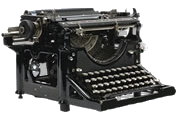Helmets Along the Western Front (Literary Digest, 1915)
The tremendous advances in artillery that took place during the years leading up to the war helped to reintroduce an old, time-tested element to the uniforms of the 20th Century soldier: the helmet.
So numerous were head injuries from high-explosive shells during the first year of the war that it compelled the doctors on both sides to beg their respective generals to issue some measure of cranium protection in order to reduce the casualty figures. As you will read in the attached article, the French began to wear helmets in the fall of 1915; the British and Germans a year later.
Helmets Along the Western Front (Literary Digest, 1915) Read More »
